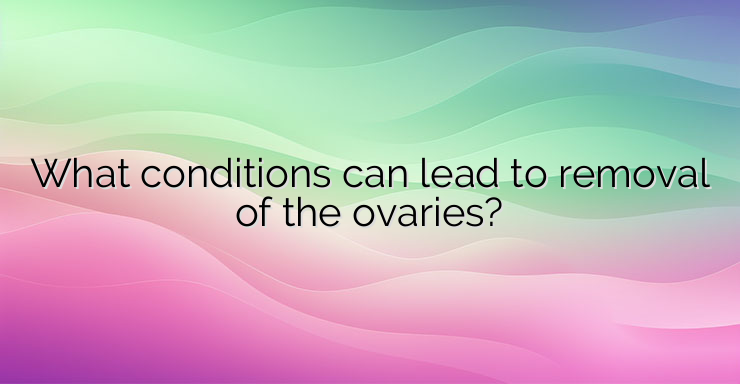An oophorectomy is a surgical procedure in which one or both ovaries are removed. This procedure can be performed by laparoscopic approach, vaginal access, or laparotomy. Removal of both ovaries results in the immediate onset of menopause. The ovaries contain and support the growth of eggs. They are reproductive glands that produce hormones and control the menstrual cycle. The hormones they secrete affect bone and heart health. Oophorectomy is most often performed to treat a disease or to reduce the risk of developing certain types of cancer. There are several different types of oophorectomy: Unilateral oophorectomy – involves removal of one ovary; Bilateral oophorectomy – involves removal of both ovaries (on both sides); Salpingo-oophorectomy – removal of one ovary and one fallopian tube; Bilateral salpingo-oophorectomy – removal of both fallopian tubes and both ovaries; Hysterectomy with salpingo-oophorectomy – this procedure involves removing the uterus (hysterectomy) at the same time as removing one fallopian tube and one ovary; Total hysterectomy with bilateral salpingo-oophorectomy – removal of the uterus, cervix, both fallopian tubes and both ovaries at the same time. Why is an oophorectomy performed? There can be several reasons for performing the procedure. Endometriosis – a condition in which cells from the inside of the uterus settle and grow in other parts of the body, most often in organs located in the pelvis; Benign growths known as cysts; Preventive surgery for women at higher risk of developing breast and ovarian cancer; BRCA gene mutations, representing genes that can lead to the development of breast cancer or ovarian cancer; Malignant formations of the ovaries; Torsion of the ovaries, which is a twisting of the ovary around its bone, which leads to disruption of its blood supply, causing severe pain; Infection of the ovary or the area around it, also known as pelvic inflammatory disease or tuboovarian abscess. The procedure to remove both ovaries leads to complete infertility. It is impossible to get pregnant naturally with bilateral salpingo-oophorectomy. These are important factors that every woman should consider before undergoing this procedure. What happens in the body after an oophorectomy? The body goes through different changes depending on the type of oophorectomy. If before the procedure, the patient has not reached menopause and it is necessary to remove both ovaries, it will occur immediately. Whether a woman will continue to have periods depends on the type of oophorectomy she had. If one ovary is removed and the other is still functioning, an egg will be released from the available ovary and the functioning ovary will have a menstrual cycle accordingly. What are the advantages of the procedure? Oophorectomy is performed in women,who have specific medical conditions or diseases, or in patients who are at higher risk of developing ovarian cancer. Having an oophorectomy can treat or minimize the symptoms of these diseases or conditions and prevent ovarian cancer in some high-risk individuals. References: 1. Erekson E, Martin D, Ratner E. Oophorectomy: the debate between ovarian conservation and elective oophorectomy. (https://www.ncbi.nlm.nih.gov/pmc/articles/PMC3514564/) Menopause. 2013 2. Lawson AA, Rentea RM. Oophorectomy. (https://www.ncbi.nlm.nih.gov/books/NBK559235/) 2021 Jul 26. In: StatPearls [Internet]. Treasure Island, FL: StatPearls Publishing. 2022 Jan 3. National Cancer Institute. Oophorectomy (Ovary Removal). (https://www.cancer.gov/types/ovarian/patient/ovarian-prevention-pdq#section/all?redirect=true) 4. Shuster L, Gostout B, Grossardt B. Prophylactic oophorectomy in pre-menopausal women and long term health — a review. (https://www.ncbi.nlm.nih.gov/pmc/articles/PMC2585770/)


Leave a Reply